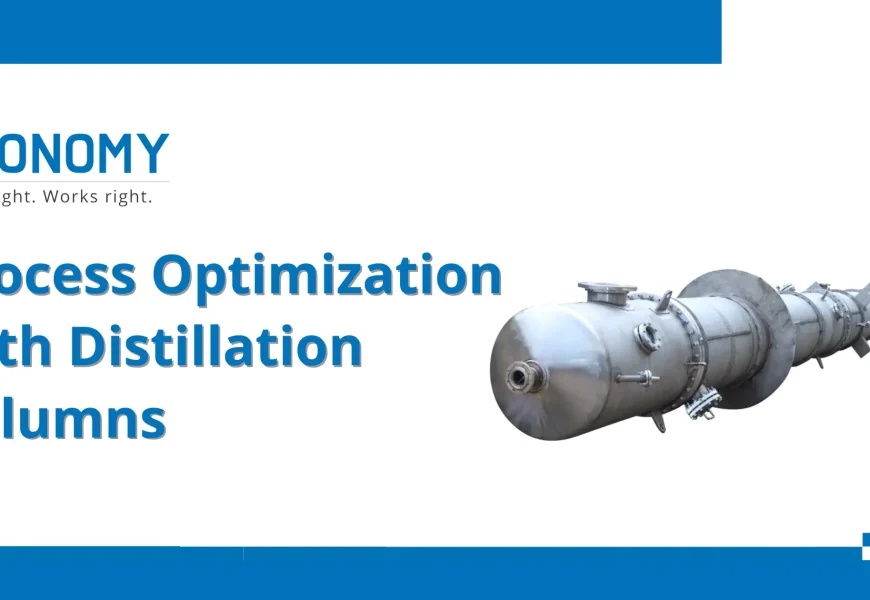Definition Of Distillation Columns And Their Importance In Various Industries
Distillation columns are vital components in the separation and purification processes used across various industries. Essentially, a distillation column is a large vertical cylindrical tower through which different components of a liquid mixture are separated based on their individual boiling points. The process relies on the principles of boiling and condensation, enabling the recovery of specific components from complex mixtures. The importance of distillation columns cannot be overstated, as they are central to industries such as oil refining, petrochemicals, pharmaceuticals, and food and beverages.
In the oil and gas industry, distillation columns are crucial for refining crude oil into its various constituents, such as gasoline, diesel, kerosene, and numerous other products. This separation process is fundamental for creating commercially viable fuel products. In petrochemical plants, distillation columns are used to produce essential chemicals and raw materials required for manufacturing a wide range of goods, from plastics to fertilizers.
In the pharmaceutical industry, they are essential for purifying and concentrating active ingredients necessary for drug formulation. The food and beverage sector also benefits significantly from distillation technology, particularly in the production of spirits and essential oils. Overall, distillation columns enhance efficiency and ensure product quality in these industries, emphasizing their pivotal role in modern industrial operations.
Types Of Distillation Columns
Distillation columns are vital components in various industrial processes, serving to separate different components based on volatility differences. These columns come in multiple types, each designed for specific applications and optimized for operational efficiency. The most basic and widely used type is the batch distillation column, which operates periodically to handle smaller quantities, making it ideal for industries with varied product lines or fluctuating production needs.
Continuous distillation columns, on the other hand, operate incessantly and are the backbone of large-scale industries, such as petroleum refineries and chemical plants, where constant operation is essential for processing large streams of feedstock efficiently.
Fractionating columns are a subtype of continuous columns that incorporate trays or packing materials, providing increased surface area and enhanced separation capabilities. They are crucial in applications requiring high purity products, such as in the production of spirits or petrochemicals. Packed bed columns, utilizing materials like raschig rings or structured packings, offer advantages in processes where lower pressure drop is needed, or where handling foamy mixtures is essential.
Components And Design Of Distillation Columns
Distillation columns are complex structures design to separate components of mixtures based on differences in their volatilities. The essential components of a distillation column include a column shell, trays or packing materials, a reboiler, and a condenser. The column shell is the main body that houses the trays or packing. Trays, often used in tray columns, come in various types, such as sieve, valve, or bubble cap trays, each designed to maximize contact between the rising vapor and the descending liquid, facilitating efficient mass transfer.
Alternatively, packed columns employ packing materials like Raschig rings or structured packing, which provide a large surface area for vapor-liquid interfacial contact.
The reboiler is located at the base of the column and supplies the necessary heat to convert the liquid mixture into vapor, driving the separation. After the vapor rises through the column and undergoes fractional condensation at different stages, it reaches the condenser at the top, which cools the vapor back into liquid, collecting it as distillate. Other key elements like feed inlets, liquid distributors, and reflux drums are integral to the operational efficacy of the column.
Design And Automation In Distillation Columns
Design and automation in distillation columns play a crucial role in enhancing the efficiency and effectiveness of separation processes in various industries. The design of a distillation column involves determining the appropriate size, shape, and internal components to effectively separate mixtures into their constituent parts. This process requires a detailed understanding of the physical and chemical properties of the compounds involved, as well as the thermodynamic fundamentals governing their interactions.
Engineers must carefully select factors such as column height, diameter, tray type, and packing material to optimize the column’s performance for specific applications.
Optimization Of Distillation Columns In Pilot Plants
Optimization of Distillation Columns in pilot plants is a critical aspect of enhancing efficiency and cost-effectiveness in various industrial processes. In pilot plants, which serve as an intermediary step between laboratory experiments and full-scale production, optimizing distillation columns involves fine-tuning multiple variables to maximize output and minimize energy consumption. This process begins with a comprehensive understanding of the operating parameters, such as reflux ratio, feed composition, column pressure, and temperature profiles.
By manipulating these factors, operators can achieve the desired separation while reducing operational costs.
Advanced process simulation tools and data analytics are essential in this optimization endeavor, as they enable engineers to predict the performance of different configurations and make informed decisions. Furthermore, implementing sensors and automated control systems can enhance precision, allowing real-time adjustments to maintain optimal conditions. Pilot plants often serve as a testing ground for innovative techniques and technologies, such as advanced packing materials, energy integration strategies, and cutting-edge control algorithms.
Industries That Benefit From Distillation Columns
Distillation columns are pivotal in various industries due to their essential role in separating components based on differences in boiling points. The petroleum industry relies heavily on distillation columns to refine crude oil into valuable products such as gasoline, diesel, kerosene, and other petrochemicals. These columns enable the precise separation of hydrocarbons, which is crucial for producing fuels that meet stringent quality and environmental standards.
In the chemical industry, distillation columns are use to purify and isolate chemical compounds, facilitating the production of high-purity solvents, acids, alcohols, and other chemicals. This is vital for ensuring the consistency and efficacy of chemical products used in pharmaceuticals, agriculture, and manufacturing.
The food and beverage industry employs distillation columns for applications like alcohol distillation—producing beverages like whiskey, vodka, and rum—and the extraction of essential oils and flavors. The ability to maintain the integrity and taste profile of products hinges on effective distillation processes.
















